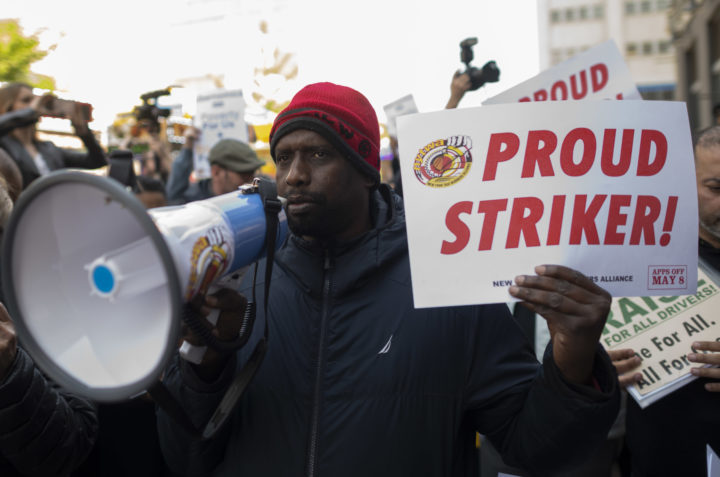Around the world, Uber drivers turned off their apps in protest of low wages as the company prepares to go public in an initial public offering on May 10, according to reports.
It’s unclear how many drivers participated in the protest. Drivers participated from New York, where they protested in front of Uber’s headquarters, to London, to Nigeria.
“We Uber drivers in Nigeria are not happy with the platform … [t]he 25% service fee on each ride is heart aching and it makes us we the drivers not to have joy. The amount we take home doesn’t reach to pay bills,” a Nigerian driver told Business Insider.
But what does this mean, and how did we get here?
Uber says the company is worth between $80 and 90 billion. But as the company prepares to go public and its top five executives receive over a $100 million in compensation, some drivers are unhappy with pay and treatment from the company. Uber drivers are considered independent contractors, not employees, which means they have to pay their own taxes and aren’t eligible for benefits such as health insurance. A judge in Philadelphia sided with Uber in 2018.
Uber claims on its website that drivers in Washington, D.C., for instance, can earn at least $3000 on their first 400 trips. But a 2016 Buzzfeed report said that drivers made less than $13.25 an hour after expenses — which include gas, insurance, and maintenance — in December 2015. Rideshare Drivers United L.A., an organization leading the strike, said that it’s demanding that Uber pay all drivers $28 an hour, which is $17 after expenses.
Even after being paid, Uber drivers have said they’ve gone into debt working for the company.
According to a study from Georgetown University’s Kalmanovitz Initiative for Labor and the Working Poor, 33 percent of the 40 D.C. drivers surveyed said they took on debt as a result of their work. Thirty percent said they had experienced assaults or other safety concerns.
Uber’s drivers are also majority-minority, according to company data. Over 50 percent of drivers are people of color, according to Entrepreneur.com. 18 percent are Black.
“They have grown and grown and gotten richer and richer, but I haven’t grown with the company. My condition as an Uber driver has gotten worse and worse,” New York Uber driver Syed Ali told Reuters.
“It used to be the passenger pays ‘this much’ and you get ‘this’ percentage of it,” San Francisco Uber driver Steve Gregg told the Washington Post. “They eliminated that. What they really did is create
